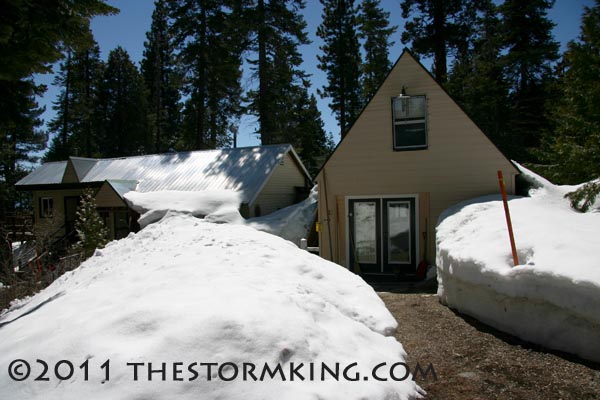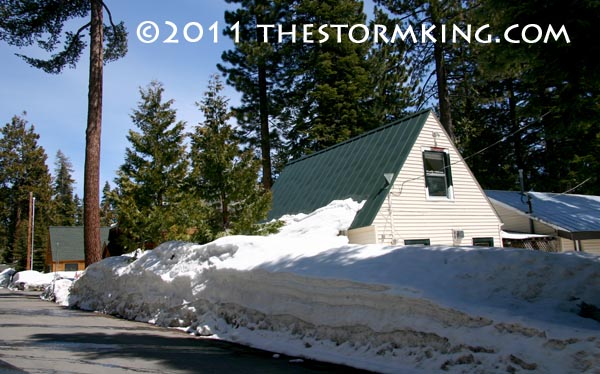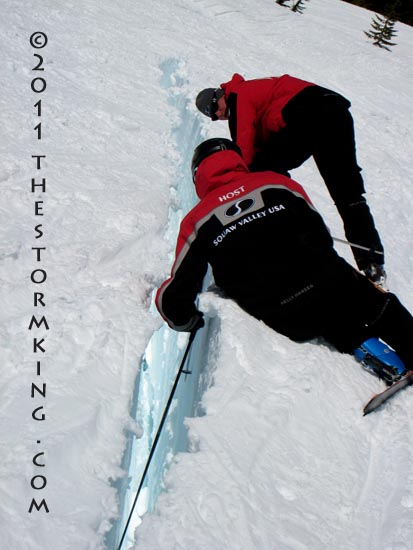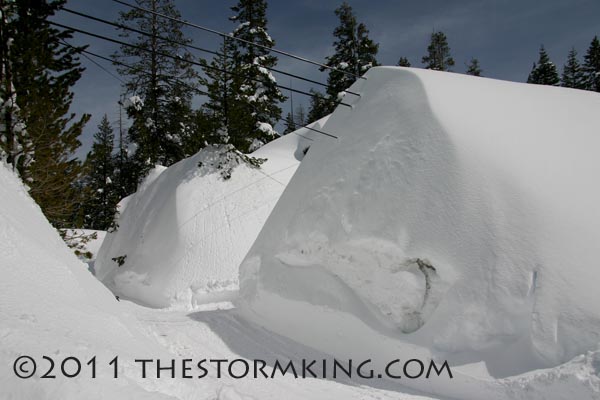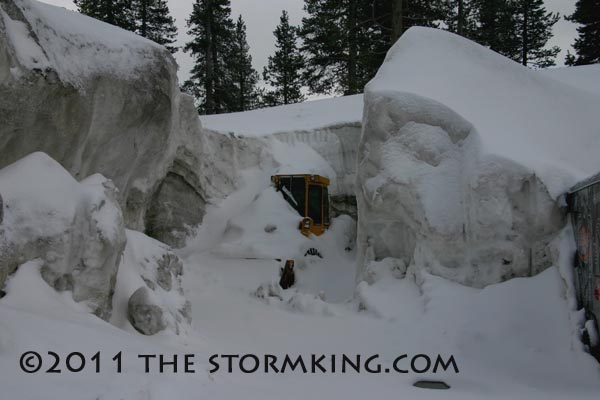|
Tahoe Nugget #204:
2011 Tahoe Winter Legacy
April 12, 2011
The epic winter of 2011 is finally winding down after pounding the Sierra with enough snow to set new records for seasonal accumulation at major Tahoe resorts. The official 2011 water year won't end
until September 30, but because April, May, and June combined typically provide only 12 percent of annual snowfall and 16 percent of our annual precipitation (summer precipitation is statistically negligible), the
worst is likely over.
Snow is melting fast here on North Shore Tahoe, but the snowpack is still substantial for mid-April.
There hasn't been enough snow at the Central Sierra Snow Laboratory (CSSL) near Donner Pass this April to bump 2011 past 16th position on the list of snowiest winters since 1878, but the game isn't over yet and the Storm
King might have a few more surprises for us. In April 1880, Donner Pass was bombarded with a record 25 feet of snow, an impressive onslaught that boosted 1880 into third place for the all-time snowiest winter.
When the snow melts I'll finally be about to see out of my first floor windows. They've been covered since mid-December.
At the end of March 2011, the snowpack at Norden and Serene Lakes near Donner Pass approached 20 feet
deep on the level, with the 17.2 feet recorded at the CSSL the fifth deepest since its establishment in 1946. The
heavy snow loads pulled down power and phone lines, while propane leaks in the Serene Lakes community caused an explosion that destroyed a three-story house and forced a voluntary evacuation order.
So much snow fell at Squaw Valley in March that the pack began to peel apart.
The seemingly endless storms in March dumped 248 percent of the average precipitation for the month at Lake
Tahoe, and left a snowpack nearly double normal. The deluge of precipitation (combination of rain and snow melted for its water content) did wonders for the water supply outlook for Lake Tahoe and the Truckee River
basin, and decisively broke a four year dry spell. In the Truckee River Basin, reservoir storage at major reservoirs were all at or above average, compared to last year when storage was only 67 percent of normal.
On April 1, water values in the Lake Tahoe Basin snowpack were measured at 173 percent of normal for the date.
Last year it was only 87 percent of average. Better yet, Lake Tahoe's water level has already risen more than two
feet since last October, and is forecast to rise another 2.30 feet to its high elevation of about 6,228 feet, just 13
inches below the maximum allowed by federal law. This dramatic rise of 4 to 5 feet in Lake Tahoe will rank as one of the top ten greatest increases since the completion of the Tahoe Dam in 1907.
Deep snow piled up at Serene Lakes is pulling down power and phone lines.
The enormous Sierra snowpack has the potential to generate flooding on both sides of the range. Historically, peak
reservoir inflows from the melting snowpack in the central and southern Sierra don't occur until mid to late May, so high water issues and flood damage will be a concern for another 8 to 10 weeks.
This front end loader broke down while digging out a storefront. Leaking propane tanks have forced authorities to restrict access to some neighborhoods. One house blew up last week.
Flood potential in the Truckee-Tahoe region is classified as above average on Lake Tahoe tributaries as well as the
uncontrolled feeder streams on the Truckee River above Reno. Fortunately, despite the rapid rise this year of Lake
Tahoe's water level, there is still plenty of storage available in Big Blue, as well as in flood control reservoirs like Prosser, Stampede, and Boca, to prevent major damage on the main stem of the Truckee River.
This spring's massive snowmelt runoff appears controllable at the moment, but all bets are off if an extended heat wave engulfs the region or if a significant rain event should occur.
|



